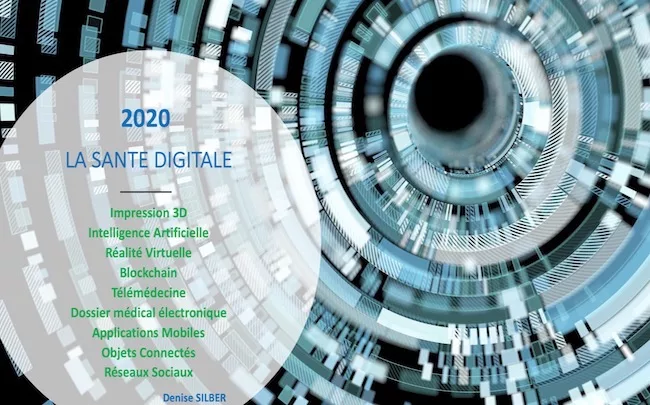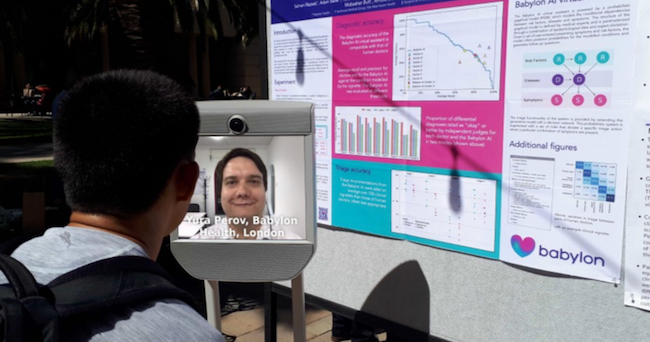In digital health, technological trends do not disappear; they co-exist , while the majority of patients do not yet benefit from them. There are pilots, experiments, clinical studies. But scale-ups are still rare. As a result, health systems and their professional ecosystems must keep abreast of multiple technologies and juggle with great uncertainty in their operational plans.

For their part, Apple , Amazon , and Google are advancing in the medical field and have the advantage not only of their considerable financial means, but also of their important partnerships, registered user data, and brand awareness. As for patients, successive surveys show that they are pragmatic and therefore mostly favorable to the application of digital to health.
How to see clearly among the various health technologies? One approach is to locate the segments by market size estimated by international research firms dedicated to new technologies. A perilous exercise certainly, but we are looking here rather for an order of magnitude and not the precise figure.
3D printing, AI and virtual reality
Let’s start with healthy 3D printing , which we know is advancing, thanks to the news on the printing of human tissues and organs. Today, it concerns in particular dental and surgical implants. The market is estimated to reach 2.2 billion euros in 2025.
Artificial intelligence in health fascinates for its potential to do better than humans, thanks to its almost unlimited computing capacities. If radiology and cardiology are the two most advanced disciplines, AI could intervene wherever it is necessary to process large volumes of data, in order to observe patterns and correlations: targeting of future pharmaceutical molecules, diagnosis, personalized medicine and genomics, surgery, monitoring of patients with chronic diseases … Babylon Health with its AI chatbot was valued at 1.8 billion euros in 2019. Sales of the healthy chatbot market were estimated at 33 million euros in 2018. Accenture nevertheless predicts that AI will reach 5.9 billion euros in 2021.

Virtual reality (VR) can produce a tangible benefit, transporting the user to another situation, thanks to the content viewed, because it changes his perception and allows him to learn. For the healthcare professional, virtual reality has its usefulness in initial and continuous training as well as for the simulation of gestures and surgical interventions. It is this aspect that is most present in the news. In the patient, but we hear less about it, virtual reality can have a very interesting impact, since it acts on pain, phobias, anxiety, depression, memory impairment and dementia. It can also accelerate re-education and rehabilitation .The overall VR health market was estimated at 230 million euros in 2018 and could reach 3 billion euros in 2027.
Blockchain, telemedicine and IoT
Blockchain is also “trendy” because it could meet the demand for more transparency and trust regarding health data . A blockchain platform must make it possible to better manage the data, because the modification of a recorded data, such as for example, the consent of a patient, the data of a patient medical record, the supply chain of the drug, n ‘ is not possible without breaking the blockchain. This market was estimated at 40 million euros in 2017 and could grow to 67.1% per year (let’s not forget the decimal 😉 according to some, until 2023.

At the same time, telemedicine , a simple technology that has existed for decades, even centuries according to the definition used, may finally be coming of age! On the B2B world level, there is the tele-expertise market (teleradiology, telepathology, telecardiology, teledermatology, etc.) and on the B2C level, there is the real-time remote consultation of the patient, as well as the kits home diagnostics, still underdeveloped in France. Telemedicine benefits from the “service on demand, anytime, anywhere” trend favored by digital. The telemedicine market could reach 27 billion euros in 2026. It would be in third position in digital health, after another market in its forties, that of the electronic medical record., estimated to reach 34 billion in 2025!
Will the mobile application market soon take off?

There are hundreds of thousands of mobile health apps , many of which are free and few that reach a significant number of users. The market could nevertheless reach 100 billion euros in 2025. As for connected objects in health , typically managed by a mobile application, the estimate is around 480 billion euros.
Several of these steps overlap. A mobile application can be used alone or for teleconsultation or even to manage a connected object, as we have just seen. Artificial intelligence applies across the board. Robotics in surgery and nanotechnology could also be mentioned. However, the estimates are too variable.
“The increase of the human being”
Paradoxically, the most accessible “digital tool” for professionals and patients and therefore the most widespread, are social networks , which are not considered to be a technology. These networks nevertheless contribute to better health, by promoting the exchange of experiences between patients, between professionals, as well as the localization of patients suffering from rare diseases, the search for organ donors, and many other things.
On Facebook , new thematic groups on health, bringing together either professionals or patients, are created daily. On January 1, 2020, a query on the largest database of medical publications, Medline, reveals the large amount of scientific research done through social networks. 3,372 publications with the word Facebook in their title and 3,271 for Twitter .
I will end by citing a transversal trend, likely to affect everyone one day: “the increase of the human being” thanks to digital technology . Multiple categories of products could enrich our cognitive and physical experience: the implant, the sensor, the prosthesis, the exoskeleton … virtual reality.
Digital health tools abound! Above all, let us try to ensure that the greatest number of patients can benefit from it, by focusing on the tools that have demonstrated their usefulness and by aligning the interests of professionals and patients so that use can take off. Axis number three of the Ma Santé 2022 reform , adopted in 2019, is “to make digital an asset for sharing health information and evolving practices.” Is!








